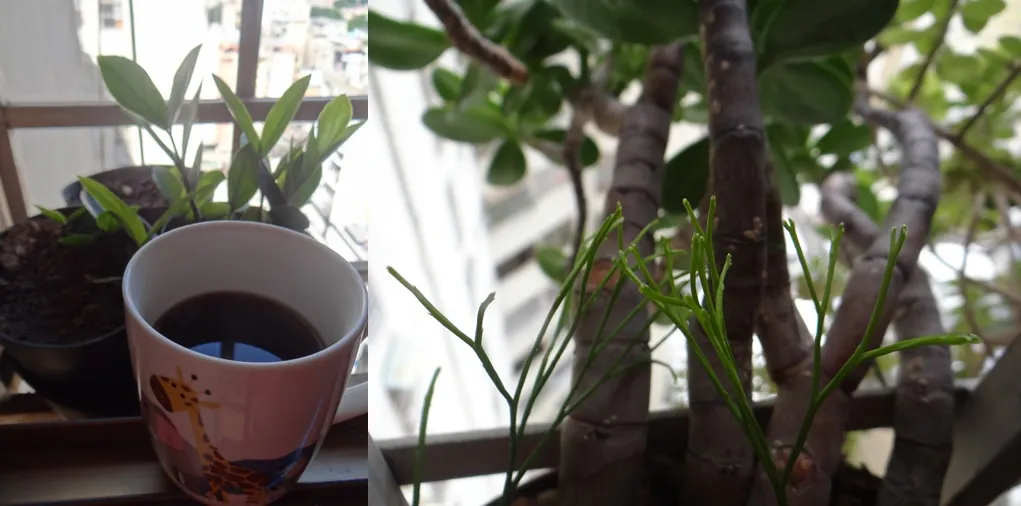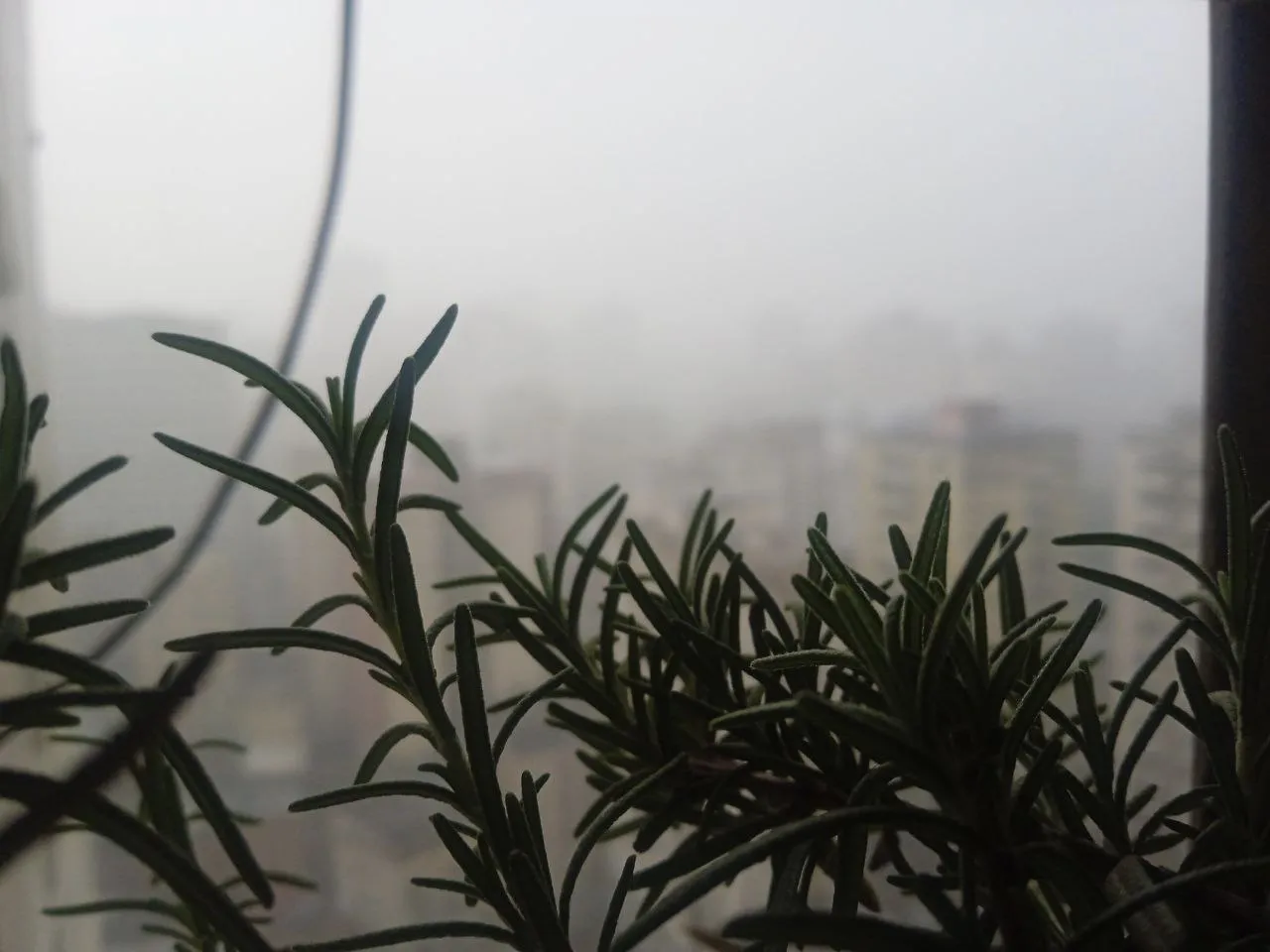

Greetings dear community of Hive Garden! My name is bulkathos and I am a biologist by profession. I was looking for a community where I could share my love for plants and it is a real pleasure to have found this space. This is my first post for the community and I wanted to do it with a very special post for me, so join me in these lines to learn a little more about a very peculiar fern: Psilotum sp.
 |  |
|---|

Today I want to share with you some great news that I was able to witness on Sunday in my apartment. The day, as you can see in the first photos, dawned with a clear sky with the Ávila hill imposing as always. If you see these photos you might think that it is the middle of summer here in the tropics, but I will show you why that would be a big mistake. I like to start the mornings with a cup of coffee while I water my beautiful plants, they are my girls and I love them.

An unexpected surprise: My Psilotum reappears!
Well, my friends, it turns out that just as I was watering my plants, I noticed a small sprout in one of my pots. It was insignificant, but I immediately recognized it! It was a Psilotum nodum sprout! You can't imagine how excited this was. In a previous post in which I was photographing my plants, I wondered where my Psilotum sp. fern was. It turns out that my mother mistakes this fern for a weed, so whenever she sees it, she pulls it out and throws it away.
 |  |
|---|

You don't know how depressed I was by this news. I love ferns and so does my mother, but what she didn't know is that this is a primitive type of fern. That's right, a fern considered a living fossil because it was one of the first primitive vascular plants!



Its scientific name is Psilotum nodum and in places like Europe it is considered an endangered species. This species of fern, like many mosses and mycorrhizae, is sensitive to pollution, and the increasing high levels of pollution in northern Europe have put this prehistoric fern against the wall. This species of fern lacks true leaves and roots, its stems are essentially green and forked.

From a bright morning to a rainy afternoon, the ace up the sleeve of Psilotum sp.
Just when I finished taking these photos, the weather immediately turned cloudy and here in the tropics there are only 2 climatic seasons: dry season and rainy season, each one in theory should last 6 months but climate change has made dry seasons last up to 8 months.


We are currently beginning the rainy season and then we have a recreation of the annual cycle in 24 hours, that is, a bright summer sun from 9 am to 3 pm and then torrential rain the rest of the afternoon and even extending into the night. As you can see in the photos, the rain has a high humidity load and this is the secret of our little fern to survive since high humidity levels favor the dispersion of its spores which makes it a resilient species!


Well, friends, I hope you liked this post as much as I liked writing it. I am a fern lover and knowing that I have the divine grace that one of these Psilotum species is growing in one of my pots is a true blessing that I wanted to share with you. I hope to soon share more posts from the rest of my urban garden. Best regards!

The camera photos were taken from my Redmi 9c mobile phone and the plant photos with the Sony Cyber-Shot DSC-HX. The translation was done with DeepL translator.
Las Fotografías de la cámara fueron tomadas desde mi móvil Redmi 9c y las fotografías de las plantas con la Sony Cyber-Shot DSC-HX. La traducción fue realizada con DeepL translator.

